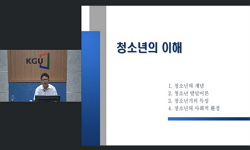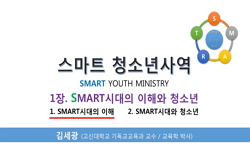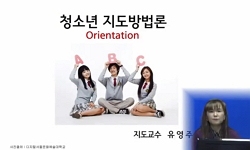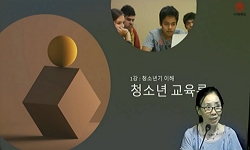The purpose of this study was to evaluate the effectiveness of the gestalt group counseling program for adolescents in Korea by utilizing meta-analysis methods. A total of 73 studies from 1985 to 2016 were selected and analyzed. The mean effect sizes ...
http://chineseinput.net/에서 pinyin(병음)방식으로 중국어를 변환할 수 있습니다.
변환된 중국어를 복사하여 사용하시면 됩니다.
- 中文 을 입력하시려면 zhongwen을 입력하시고 space를누르시면됩니다.
- 北京 을 입력하시려면 beijing을 입력하시고 space를 누르시면 됩니다.
청소년을 대상으로 한 게슈탈트 집단상담 프로그램 효과에 대한 메타분석 = The meta-analysis on the effect of Gestalt group counseling program for adolescents
한글로보기https://www.riss.kr/link?id=T14744686
- 저자
-
발행사항
대구 : 경북대학교 대학원, 2018
-
학위논문사항
학위논문 (석사) -- 경북대학교 대학원 , 교육학과 교육심리 및 상담심리 전공 , 2018. 2
-
발행연도
2018
-
작성언어
한국어
- 주제어
-
DDC
373.14 판사항(23)
-
발행국(도시)
대구
-
형태사항
v, 144 p. : 삽화 ; 26 cm
-
일반주기명
지도교수: 김진숙
참고문헌 수록 - 소장기관
-
0
상세조회 -
0
다운로드
부가정보
다국어 초록 (Multilingual Abstract)
The purpose of this study was to evaluate the effectiveness of the gestalt group counseling program for adolescents in Korea by utilizing meta-analysis methods. A total of 73 studies from 1985 to 2016 were selected and analyzed. The mean effect sizes and test for homogeneity of effect size were analyzed by using The R Project for Statistical Computing 3.4.0 version. The Random-effects model was adopted and 168 effect sizes were calculated. The following analysis results were observed.
First, the overall mean effect size of the program was found to be 0.942. The effect size is considered as a large mean effect size according to the criteria which Cohen (1988) established.
Second, among dependent variables, Self-concept was found to be the most effective variable (1.066) in regard to the effect size. Emotion (1.015), school life adaptation (0.874) and interpersonal relation (0.679) all showed mean effect size, implying that the gestalt group counseling program for adolescents was effective in all mentioned fields.
Third, a slight decrease was observed in the relations between the publication year of the subject for analysis and the effect size (-0.0228). The mean effect size differed between the sample groups according to the other moderating variables examined (school level of subject, spontaneity, subject specialty, gender and group size respectively). High school students showed the highest mean size for the school level of subjects (1.648) while the spontaneous group displayed the highest mean size for spontaneity (1.141). The highest mean sizes in subject specialty, gender and group size were observed in the general group (1.185), mixed general group (1.094) and groups with between 7 and 10 members (1.173) respectively. When the sessions were conducted more than 11 times, the mean effect was seen to be at its highest (1.361). Other groups representing highest mean effect sizes were more than 3 sessions per week (1.152), between 51 to 90 minutes per session (1.059) and over 9 weeks of conducting period (1.319). Moreover, the mean effect size was observed to be highest in cases where the experience report was filled in. Among the different gestalt group counseling program combinations, the mean effect sizes were seen to be different depending on the combinations of programs used. Utilizing the gestalt program combined with other counseling theories gave a mean effect size of 1.331, while combination with the empty chair or self-awareness centered program, integrated art therapy orientated program and GRIP program gave mean effect sizes of 1.202, 0.89 and 0.601 respectively. These combinations represented more than the average effectiveness of the mean effect size. In addition, there were no statistically significant differences observed based on the group size, number of sessions per week, duration of each session and experience reported.
Based on these outcomes, the findings of this study can be used to support the planning of interventions providing gestalt group counseling to adolescents. Moreover they can provide implications in the continued development and implementation of gestalt group counseling programs focusing on adolescents.
목차 (Table of Contents)
- I. 서론 1
- 1. 연구의 필요성 및 목적 1
- 2. 연구문제 8
- Ⅱ. 이론적 배경 9
- 1. 청소년 9
- I. 서론 1
- 1. 연구의 필요성 및 목적 1
- 2. 연구문제 8
- Ⅱ. 이론적 배경 9
- 1. 청소년 9
- 2. 게슈탈트 집단상담 프로그램 19
- 3. 게슈탈트 집단상담 프로그램 종속변인 26
- 4. 게슈탈트 집단상담 프로그램 조절변인 41
- 5. 게슈탈트 집단상담 프로그램 메타분석 선행연구 47
- Ⅲ. 연구 방법 49
- 1. 연구모형 49
- 2. 분석대상 논문의 선정 50
- 3. 분석 대상 연구의 특성 54
- 4. 자료의 분석 방법 68
- 5. 자료 처리 및 분석 77
- Ⅳ. 연구 결과 79
- 1. 청소년 대상 게슈탈트 집단상담 프로그램의 전체 평균효과크기 79
- 2. 종속변인에 따른 평균효과크기 80
- 3. 조절변인에 따른 평균효과크기 81
- 4. 데이터 오류 검증 95
- Ⅴ. 논의 99
- Ⅵ. 결론 및 제언 115
- 1. 결론 115
- 2. 제언 117
- 참고문헌 119
- Abstract 134
- 부록 1. 코딩양식 136
- 부록 2. 코딩 매뉴얼 137
- 부록 3. 메타분석 대상 논문 139












